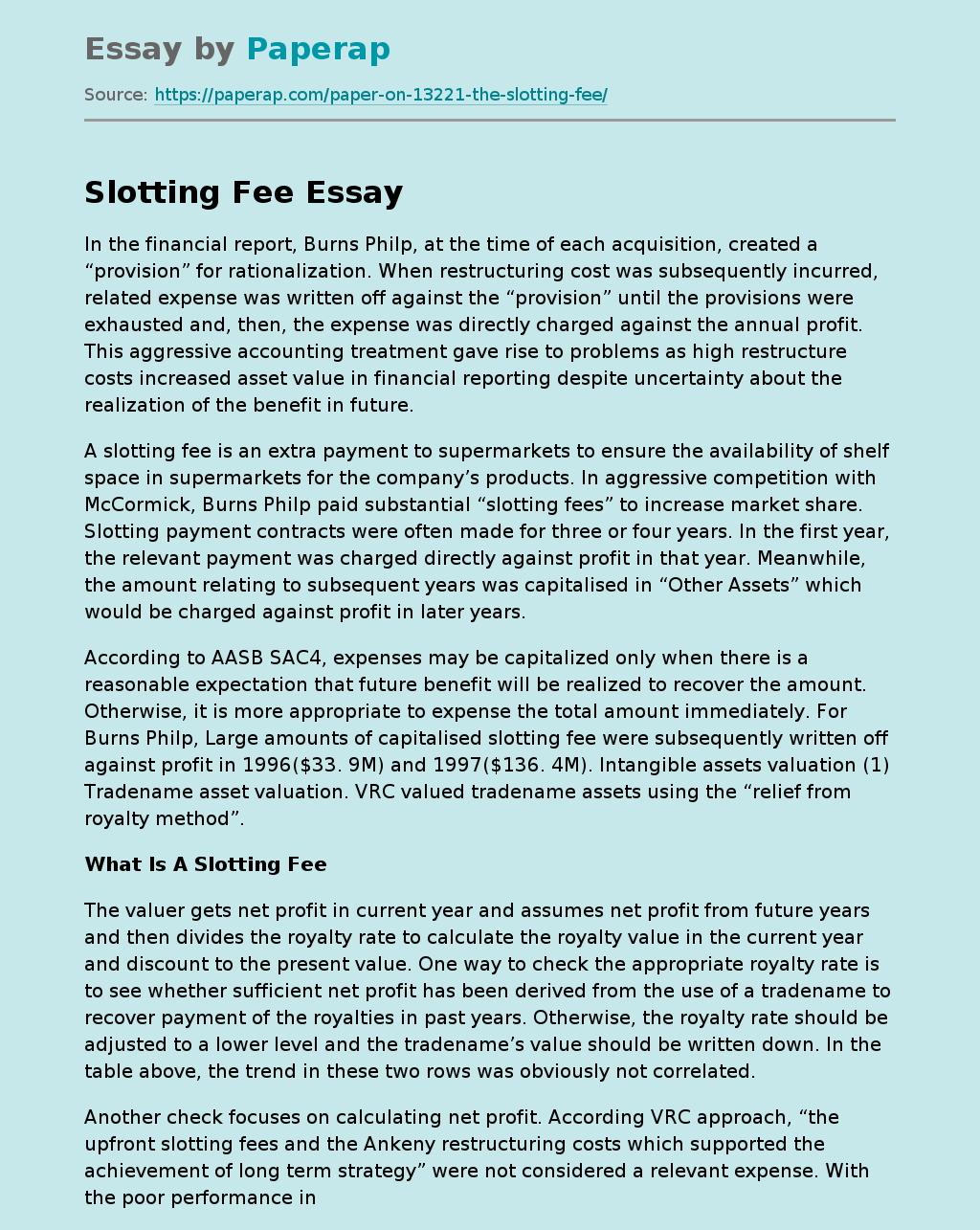Accounting Report Provisions for Restructuring
In the financial report, Burns Philp, at the time of each acquisition, created a “provision” for rationalization. When restructuring cost was subsequently incurred, related expense was written off against the “provision” until the provisions were exhausted and, then, the expense was directly charged against the annual profit. This aggressive accounting treatment gave rise to problems as high restructure costs increased asset value in financial reporting despite uncertainty about the realization of the benefit in future.
A slotting fee is an extra payment to supermarkets to ensure the availability of shelf space in supermarkets for the company’s products.
In aggressive competition with McCormick, Burns Philp paid substantial “slotting fees” to increase market share. Slotting payment contracts were often made for three or four years. In the first year, the relevant payment was charged directly against profit in that year. Meanwhile, the amount relating to subsequent years was capitalised in “Other Assets” which would be charged against profit in later years.
According to AASB SAC4, expenses may be capitalized only when there is a reasonable expectation that future benefit will be realized to recover the amount.
Otherwise, it is more appropriate to expense the total amount immediately. For Burns Philp, Large amounts of capitalised slotting fee were subsequently written off against profit in 1996($33. 9M) and 1997($136. 4M). Intangible assets valuation (1) Tradename asset valuation. VRC valued tradename assets using the “relief from royalty method”.
What Is A Slotting Fee
The valuer gets net profit in current year and assumes net profit from future years and then divides the royalty rate to calculate the royalty value in the current year and discount to the present value.
One way to check the appropriate royalty rate is to see whether sufficient net profit has been derived from the use of a tradename to recover payment of the royalties in past years. Otherwise, the royalty rate should be adjusted to a lower level and the tradename’s value should be written down. In the table above, the trend in these two rows was obviously not correlated.
Another check focuses on calculating net profit. According VRC approach, “the upfront slotting fees and the Ankeny restructuring costs which supported the achievement of long term strategy” were not considered a relevant expense. With the poor performance in 1997, the cost was not recovered by long-term economic benefit and should appropriately be recognised as an expense. (2) Another issue is internally generated asset valuation. Regarding AASB1013, goodwill value is only recognised in financial reports when it is purchased.
While when VRC valued the tradename, it included both purchased and internally developed tradenames. The consolidated value will make the value of tradenames overstated. As the tradename value of “herbs and spices” business was materially overvalued, it was written down by $435. 5M in 1997. Audit risk is the risk that the auditor may express an inappropriate opinion or accept financial information that is materially misstated. Audit risk is commonly assessed within three components. Inherent risk, control risk and detection risk.
Accounting Report Provisions for Restructuring. (2019, Dec 05). Retrieved from https://paperap.com/paper-on-13221-the-slotting-fee/

